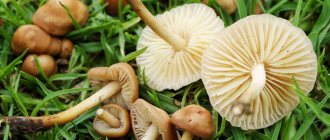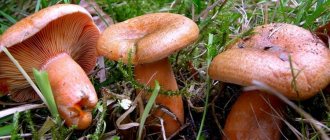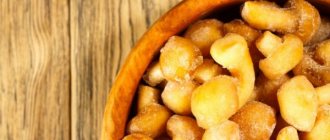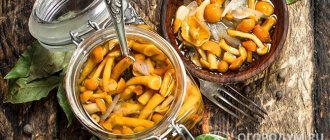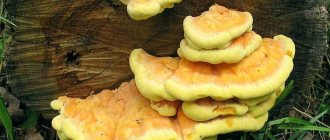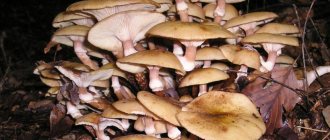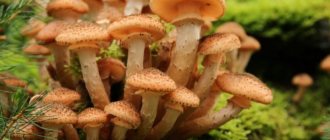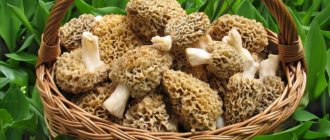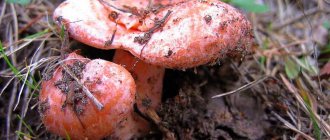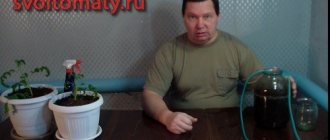Most housewives and mushroom pickers claim that honey mushrooms have high taste. They can not only be fried and pickled, but also boiled, salted, and added to various dishes. Ease of assembly is considered a big plus.
So, mushrooms grow in groups, and they are always noticeable, so you can collect a full basket at one time. However, experts warn that there are doubles of honey mushrooms - conditionally edible and even poisonous mushrooms that can cause severe intoxication of the body. That is why it is very important to know how to distinguish forest mushrooms from false types of mushrooms.
Honey mushrooms - false and edible
At first glance, false and edible honey mushrooms are extremely similar. They have approximately the same color of the cap, a similar arrangement of plates on its inner side, and edible and poisonous species grow in the same places.
Note: The mushroom got its name due to the fact that its mycelium develops on old stumps or fallen tree trunks, and this feature is relevant for both poisonous and edible representatives.
The stems of these mushrooms are thin and hollow inside. The surface of the cap is in most cases smooth, but in edible species it can often be covered with scales. The color of the cap and pulp directly depends on the type of tree on which the mushrooms grow. For example, on coniferous trees they take on a brick-red hue, on linden or aspen they become bright yellow, and on oak they can be slightly reddish. In addition, the shade of the pulp may depend on the time of year and the type of mushroom itself.
Figure 1. This is what poisonous twins look like
Experienced mushroom pickers can distinguish a false mushroom from an edible one the first time, while beginners may have some difficulty with this. In order for you to gain the necessary experience in identifying real and false specimens, we suggest that you familiarize yourself with the distinctive features of edible species and their poisonous counterparts. You can see photos of false specimens in Figure 1.
Distribution and habitats
Autumn honey fungus is known everywhere. It has a wide range from the tropics to the Far North and in all time zones.
Grows in mixed and deciduous forests, preferring birch. If the forest land is more than 30 years old, then honey mushrooms can certainly be collected there. Often found in the root zone of bird cherry and viburnum, in thickets of hazel and acacia.
The honey fungus rarely parasitizes a living tree, mainly settling on stumps and dead trunks. Performs sanitary functions; within a few years, wood and stumps, infested with mycelium, turn into dust. In productive years it can also grow on leaf litter or even in grass. Especially if there was previously a tree or its branches lying here and the woody substrate was still preserved in the soil.
Distinctive features of edible mushrooms
Despite the fact that at first glance false honey mushrooms look almost the same as edible ones, they have some very characteristic differences. Knowing them, you will never put a poisonous mushroom in the basket.
Note: Experienced lovers of “silent hunting” strongly advise collecting only well-known mushrooms. If you have even the slightest doubt about the edibility of a particular specimen, it is better to avoid it, as poisonous lookalikes can cause symptoms of severe poisoning.
To make sure that the honey mushroom is edible, you need to carefully examine it:
- Edible species are not brightly colored, unlike false ones, which are immediately noticeable due to their rich brick red, honey brown or orange color.
- All real honey mushrooms have a special skirt on a leg, which is absent in all false species, without exception. In fact, this skirt represents a ring on the leg, and it is present in both young and old specimens. This feature is the main one when identifying mushrooms.
- If you have any doubts, be sure to look under the hat. If the mushroom is edible, its plates will have a pleasant cream, white or slightly yellowish color, while in poisonous species they will be dirty yellow, greenish or brown, depending on age.
Figure 2. Distinctive features of edible mushrooms
Another characteristic feature of edible species is the presence of scales on the surface of the cap (Figure 2). This feature is absent in false species. However, it should also be remembered that as the mushroom ages, these scales disappear, so it is better to collect young specimens that meet all the above characteristics. The only exception to the rule is the winter honey fungus, which is found only in the cold season and can grow even under a layer of snow. However, this type of edible mushroom grows at a time when other species are not found, so you can safely eat them.
Honey mushrooms, but not the same ones
False Honey mushrooms - little forest deceivers
Honey mushrooms are one of the most favorite search objects during a quiet hunt. There are many types of them, differing in places of growth, culinary value and nuances of appearance. We have already looked at what honey mushrooms look like in other articles. Honey mushrooms also have various doubles that are similar in appearance, but have no nutritional value, and are even completely poisonous. Among these doubles, a significant place is occupied by False Honey Mushrooms - this category includes a group of species, most often originating from the genus Hyfoloma, family Strophariaceae, or the genus Psatirella, family Dungweed.
Some types of False Honey Mushrooms are officially classified as conditionally edible mushrooms, but even if they can, theoretically, be eaten, there is no particular point in this.
During a quiet hunt for honey mushrooms, it is imperative to know and take into account the external signs of False Honey mushrooms, so as not to accidentally grab them instead of edible ones.
Types of False Honey mushrooms
What false honey mushrooms look like: photo and description
The group of false mushrooms includes several species that are slightly different from each other in appearance, but in general are very similar to edible species. Some of them are conditionally edible, but are suitable for consumption only after certain processing. Therefore, if you cannot say for sure whether a mushroom is edible or not, it is better not to put it in the basket (Figure 3).
Among the most common types of poisonous mushrooms, it is worth highlighting:
- Poppy: Also called seroplate. Prefers to settle on fallen trunks and stumps of coniferous trees. You can find such a mushroom in the forest from late summer to mid-autumn. The hat has the shape of a hemisphere and can reach 7 cm in diameter. As they grow older, the cap straightens. If the mushroom grows on a moist substrate, its flesh will be light brown, and on dry soil it will turn light yellow. If you break the mushroom and smell it, you will clearly smell the dampness. On the inside of the cap there are plates that grow tightly to the stem. In young specimens these plates are pale yellow, but as they mature they become similar to poppy seeds. This species belongs to the conditionally edible species, but it is not recommended for beginners to collect them, as there is a high risk of confusing them with poisonous ones.
- Brick Red: A poisonous mushroom that can easily be confused with an edible one. Young specimens have neat, rounded caps that become half-spread as they mature. The color of the pulp can range from red-brown to red-brown or brick-colored. The flesh is yellow, as are the plates located under the cap: in young mushrooms they are dirty yellow, but as they age they become olive or brown. Prefers to grow on woody remains of deciduous trees. Found in forests from late summer to early autumn.
- Sulfur Yellow: Another poisonous species that should not be put in the basket. The diameter of the cap, depending on age, can range from 2 to 7 cm. In young specimens, its shape is similar to a bell, and as it grows, it straightens and becomes prostrate. The name of the mushroom exactly corresponds to its appearance: the color of the cap and pulp can vary from yellow-brown to sulfur-yellow, and the color in the center of the cap is much darker than at its edges. Mushrooms also grow in groups on both deciduous and coniferous trees.
Figure 3. The main types of poisonous counterparts: 1 - poppy, 2 - brick-red, 3 - sulfur-yellow.
All poisonous species have several features: they lack a leathery ring on the stem, and the flesh has a pronounced unpleasant smell of dampness.
What mushrooms should you be wary of?
A young mushroom picker should always be especially careful and distinguish between false and real honey mushrooms. If the first group includes edible and rarely conditionally edible mushrooms, then among the latter there are many inedible ones. It should be remembered that false honey mushrooms can be very dangerous and often lead to poisoning.
Which fruits are better not to take:
- The three most frequently encountered belong to the genus Hyfoloma. Among them is grey-yellow, the Latin name for the fungus Hypholoma fasciculare. The mushroom is poisonous, but sometimes the summer honey fungus is confused with it. Unlike the edible mushroom, it does not have a ring; the plates become greenish with age. The leg is hollow, light yellow.
- The same genus, brick-red honey fungus, Latin name Hypholoma sublateritium. Form large clusters. The height is up to 12 cm and the diameter reaches 1.5 cm, while the leg is even, becoming hollow with age. The upper part is bright yellow, the lower part is brownish to red-brown. The cap, up to 10 cm in diameter, changes with age from bell-shaped to flat. The color is brick red-brown and ranges to yellow-brown. The edges are a little lighter. Although it is considered poisonous, many sources classify it as edible. Perhaps it is not quite correctly classified as false honey mushrooms.
- The last described representative of the genus is the sulfur-plated, or Hypholoma capnoides, sometimes called poppy. In principle, the mushroom is edible, although many people prefer not to take it, confusing it with the summer one. Leg up to 10 cm and up to 8 mm in diameter. The cap is up to 8 cm from yellow-orange to brownish.
And also two mushrooms of the genus Psatirelaceae belong to false honey mushrooms:
- The first one will be the Candolle mushroom, or (in Latin) Psathyrella candolleana. In principle, there is controversy about the mushroom itself. Some consider it inedible, others consider it conditionally edible. After serious heat treatment, it can be used for cooking. But since it is very similar to its poisonous relatives, experts do not recommend taking it. Leg up to 9 cm and up to 6 mm in diameter, brittle, hollow. Color - from white to cream. The cap is up to 8 cm, opens flat. The color is brownish to yellow-brown. Found in deciduous forests. It grows from May to October.
- The second representative is watery honey fungus, Latin name Psathyrella piluliformis. Most often it is considered inedible, even though some people know how to cook. Leg up to 8 cm and up to 8 mm in diameter. Often curved, hollow. The surface is silky and smooth. The color is light brown, closer to the cap it is covered with a powdery coating. The cap is up to 5 cm, with often dissecting edges, and a tubercle in the center. The color is dark brown. From September to November it forms colonies in deciduous forests, but is sometimes also found in coniferous forests.
Reddish talker, or (in Latin) Clitocybe rivulosa. The leg is up to 4 cm and up to 8 mm in diameter, cylindrical, becoming hollow with age. Color - from whitish to nutty. Cap up to 6 cm, from powdery gray to buffy. A powdery coating is visible on the surface, and there are grayish spots. It grows in large families in meadows, sometimes forming witch circles. Can be confused with meadow honey fungus. You have to be careful.
Margined galerina, or Galerina marginata. The cap is up to 4 cm in diameter, convex, with a border curved inward, becoming flat over time. The surface is smooth, the color ranges from pale ocher to yellow ocher. The pulp is pale brownish-ocher to white. The smell is reminiscent of flour. The mushroom is very poisonous; its danger can only be compared with the toadstool. Reminiscent of some types of honey mushrooms, you should be very careful.
How to distinguish false honey mushrooms from edible ones
When going into the forest, you must definitely study the theoretical information about edible honey mushrooms and their poisonous counterparts, and carefully examine photos of these species, so as not to accidentally confuse a real honey mushroom with a false one. In fact, recognizing an edible mushroom is not so difficult if you know its main signs (Figure 4).
You can distinguish an edible mushroom from a poisonous one by the following signs:
- Cap: in real mushrooms it is covered with small scales, which are slightly darker than the main color of the skin. Only old specimens lose this feature, but they should not be collected in any case, because such mushrooms lose their taste and can accumulate radionuclides and other harmful substances. The only edible honey mushroom that has no scales on its cap is the winter mushroom, but it is found only in the cold season, when other mushrooms do not grow and it is impossible to confuse it with poisonous species.
- Leathery skirt (ring): all edible species, except very old specimens, have a white film on the stalk, directly under the cap, which eventually turns into a ring. This is the main sign that experienced mushroom pickers use, because false species do not have this skirt.
- Skin color on the cap: poisonous species are much brighter than edible ones and immediately catch the eye. Therefore, you should not immediately collect bright mushrooms; it is better to carefully examine them to make sure they are edible. Remember that real mushrooms are muted brown in color, while poisonous species have reddish and yellow-gray skin colors.
- Smell: If you still doubt the edibility of a mushroom, break it open and smell the flesh. Real mushrooms have a rich mushroom aroma, while their poisonous counterparts smell unpleasant - damp, mold or rotten earth.
- Plates: under the cap of all honey mushrooms, both false and edible, there are plates. However, in true species they are light (beige or slightly yellowish), while in poisonous ones they are much brighter, darker and can be colored green, yellow or olive tones.
Figure 4. The main differences between edible and poisonous species: by the skirt (on the left) and by the color of the plates (on the right: A - edible, B and C - poisonous)
There are significant differences in the taste of false and real species. Poisonous ones are very bitter and unpleasant in taste, but distinguishing mushrooms this way is strongly not recommended due to the risk of severe food poisoning. It is better to use a safe method of identification by external signs, but if you have already prepared honey mushrooms and feel bitterness, immediately throw away the dish and do not eat it.
If you do accidentally eat false honey mushrooms, you should pay attention to the main signs of poisoning with them. The first symptoms begin to appear within an hour after consumption, but in some cases they may appear later, after 12 hours. Poisonous mushrooms contain toxins that gradually penetrate into the blood and cause stomach discomfort, dizziness, nausea, heartburn and severe stomach rumbling. As the toxins spread, the symptoms intensify: after 4-6 hours, apathy, general weakness and trembling in the limbs appear. To prevent other consequences, such as diarrhea, vomiting and severe sweating, you should immediately consult a doctor for help.
False meadow honey fungus: difference from edible
In the understanding of most, all mushrooms, including honey mushrooms, grow in the forest. However, there are species that prefer open fields. These include the meadow honey fungus, which prefers well-lit clearings, pastures or meadows.
Note: As a rule, meadow species grow in large families, forming clear rows, but in some cases they grow in rings. People call this phenomenon the “witch’s circle.”
These mushrooms prefer damp but warm weather, and begin to appear above the soil surface in spring and early summer. If spring turns out to be rainy, it makes sense to take a walk through the meadows in early June. It is possible that you will be able to collect a rich harvest of mushrooms. However, it should be remembered that the meadow honey fungus has a poisonous counterpart that should not be eaten (Figure 5).
In order not to confuse an edible specimen with a false one, you need to learn to recognize them:
- Like other types of honey mushrooms, the edible meadowsweet has a leathery ring on the stem under the cap. The height of the leg is no more than 6 cm, while in poisonous counterparts it can reach 10 or more centimeters in height.
- The plates under the cap of a true meadowsweet have a pleasant cream or slightly yellowish tint, while those of an inedible one are bright yellow, and as they age they become green and even black.
- The cap of the edible meadow grass is not bright: it is predominantly dull brown and covered with scales of a darker shade. The false mushroom has a bright skin on the cap, with a pronounced reddish tint, and the scales are completely absent.
Figure 5. Meadow mushrooms (1 and 2) and their poisonous counterparts (3)
In addition, if you have already picked a mushroom, you can determine its edibility by smell. True meadow mushrooms have a very strong and rich mushroom aroma, while their poisonous counterparts smell unpleasant (of mold or rotten soil). The last sign by which you can distinguish an edible meadowsweet from a false one is contact with water. If you soak real mushrooms, their flesh will not change color and will remain a pleasant creamy color, whereas in poisonous species it may turn black or blue.
Some people advise lightly biting or licking the pulp of the honey mushroom. If it is bitter, it means the mushroom is inedible. This is partly true, but using this method to identify mushrooms is not recommended, since even a small amount of toxins can cause severe poisoning and liver problems. The author of the video provides safer methods that will help distinguish false honey mushrooms from edible ones.
In case of poisoning
False mushrooms are not as dangerous as Pale Toadstool or Galerina Bordered. Fortunately, there is no information that anyone was poisoned to death by false honey mushrooms. However, there is little good in the food intoxication they cause. In case of poisoning with false honey mushrooms, you must follow the basic rules for helping with mushroom poisoning:
- Rinse the patient's stomach with boiled water and soda (1 teaspoon per liter of water). The patient drinks a large volume of liquid, and then vomits by pressing on the root of the tongue. The procedure must be repeated until the water becomes clear.
- Give the patient activated charcoal.
- Lay the patient horizontally and wrap him warmly.
- After gastric lavage, provide the patient with plenty of fluids.
In case of severe poisoning, it is imperative to call an ambulance for the poisoned person.
False honey mushrooms are called that because they are similar to the real ones in their place of residence - on stumps and rotting wood, as well as external signs, but do not have their culinary qualities, and are sometimes dangerous to health.
Among the false mushrooms, there are no deadly poisonous ones, but there is little benefit from getting to know them, so it is useful for any collector to know what they look like and how they differ from normal mushrooms.
Answers to frequently asked questions
What signs should you first pay attention to when determining the edibility of honey mushrooms?
First you need to pay attention to the presence of a skirt and the color of the mushroom. The edible mushroom is distinguished by the dull color of its cap and plate. Young fruiting bodies have noticeable scales. In addition, you need to pay attention to the smell of the mushroom. If it is unpleasant, it is better not to take the fruit.
What color is the cap of the edible honey mushroom?
Edible mushrooms always have light-colored caps. Light brown colors predominate.
What are the main symptoms of poisoning?
When consuming poisonous honey mushrooms, a person experiences complaints of dizziness, vomiting, weakness, and increased salivation. There are facts of confusion and death when consuming large quantities of poisonous fruits.
